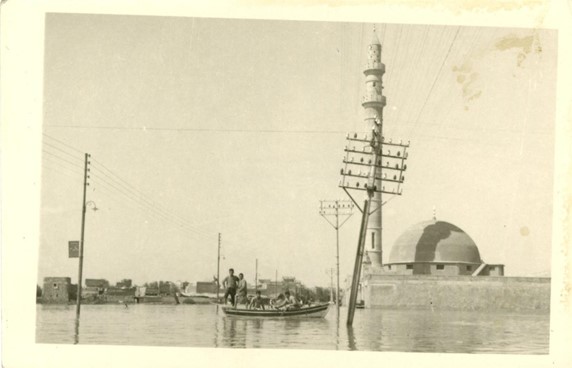Iconic photographs of historic Mosul almost lost forever when Islamic State terrorists invaded the city will be on show for the first time at a major new exhibition.
The photos - including children playing and rare images of the city's 1963 flood - were taken over a period of more than 60 years by the celebrated photographer Muhammed Jawad Kadim. He managed to retrieve part of his extensive archive after IS destroyed his neighbourhood a decade ago.
Jawad's work includes over 7,000 photographs taken over five decades, preserved in albums that vary in condition. The photographs were saved from the destruction of the Nabi Yunis area and are the only belongings he chose to rescue during his displacement, foregoing essentials like food and clothing. So far 1,500 have been digitized by researchers who interviewed him at Kashkul, the Center of Art and Culture at the American University of Iraq Sulaimani.
The exhibition, held at the University of Exeter, is the first retrospective and curated show of his work. It will include an audio-visual experience designed to recreate the noises - as well as pictures - of neighbourhoods of Mosul lost forever during the conflict. It features the sound of Maqam recitation and of various crafts from the city.
Maqam is the system of melodic modes in the traditional shared musical culture of the Middle East and North Africa and Central Asia. Iraqi Maqam is one of the oldest and most celebrated forms of Maqam culture and was inscribed on the UNESCO Representative List of the Intangible Cultural Heritage of Humanity in 2008.
The exhibition, Mosul's Witness, is run as part of a project, led by Bryar Bajalan from the University of Exeter and Mosul-based researchers, Tahany Saleh, Mahmmood Jumaa, staff from Kashkul and the "Volunteer With Us" organization in Mosul, to safeguard vibrant Iraqi maqam music and protect it for future generations. The exhibition is curated by Bryar and Pshtiwan Kamal, the Digital Presence & Events Strategist at Kashkul.
Born in Nabī Yūnis in 1935, Muḥammad Jawad Kadim, who died two years ago, apprenticed himself as a young man to Murad al-Daghistani, a pioneer of Iraqi photography, and one of the first to photograph everyday Iraqi life. At Al-Daghistani's recommendation he purchased his first camera, a Tashika, in the mid-1950s. In 1959, he bought a wide-angle lens so that he could leave the portrait studio and begin to photograph the city of Mosul, climbing up the Al-Habda minaret to survey the city from above.
Staff at Kashkul interviewed him in October 2018 as part of the Mosul Lives project, which collects oral histories documenting life in Mosul before 2003.
Bryar said: "We are proud to show Jawad's work alongside this unique visual and auditory experience. We hope it will revive cultural soundscapes lost due to war, show Mosul's rich heritage and bring back to life markets and streetscapes.
"The exhibition is special because the images were almost lost forever. During the violence Jawad could not leave his home so some of the photographs are taken from the rooftop of his house. They contrast with the same scenes he had been photographing since the 1950s.
"He was so generous when we interviewed him and wanted us to preserve his pictures. His family are pleased they will be exhibited."
The captions for the photographs are taken from Jawad's interviews. Also, on display will be some of his personal effects and photography equipment.
Mosul Maqam is funded by the British Council's Cultural Protection Fund in partnership with the UK government's Department of Digital, Culture, Media and Sport (DCMS).
Pshtiwan said:"Muhammed Jawad's photography holds not only artistic significance but also historical importance. Through his lens, we see the history of Mosul-a city suffering from mass destruction-preserved from the perspective of a Mosuli citizen.
"I moved from Slemani to Iowa City in the U.S. at the end of 2019, where I began a project photographing clouds. Yet, those clouds never fulfilled me. In contrast, the clouds in Slemani feel like old friends-I can sense their shapes and textures in a way I never could elsewhere.
"I believe the same is true for Muhammed Jawad. He seems deeply connected to the minarets, clouds, people, and everything that shapes Mosul. Without his dedication to capturing these moments, we would never have experienced life in Mosul as it was in the fifties and beyond."







